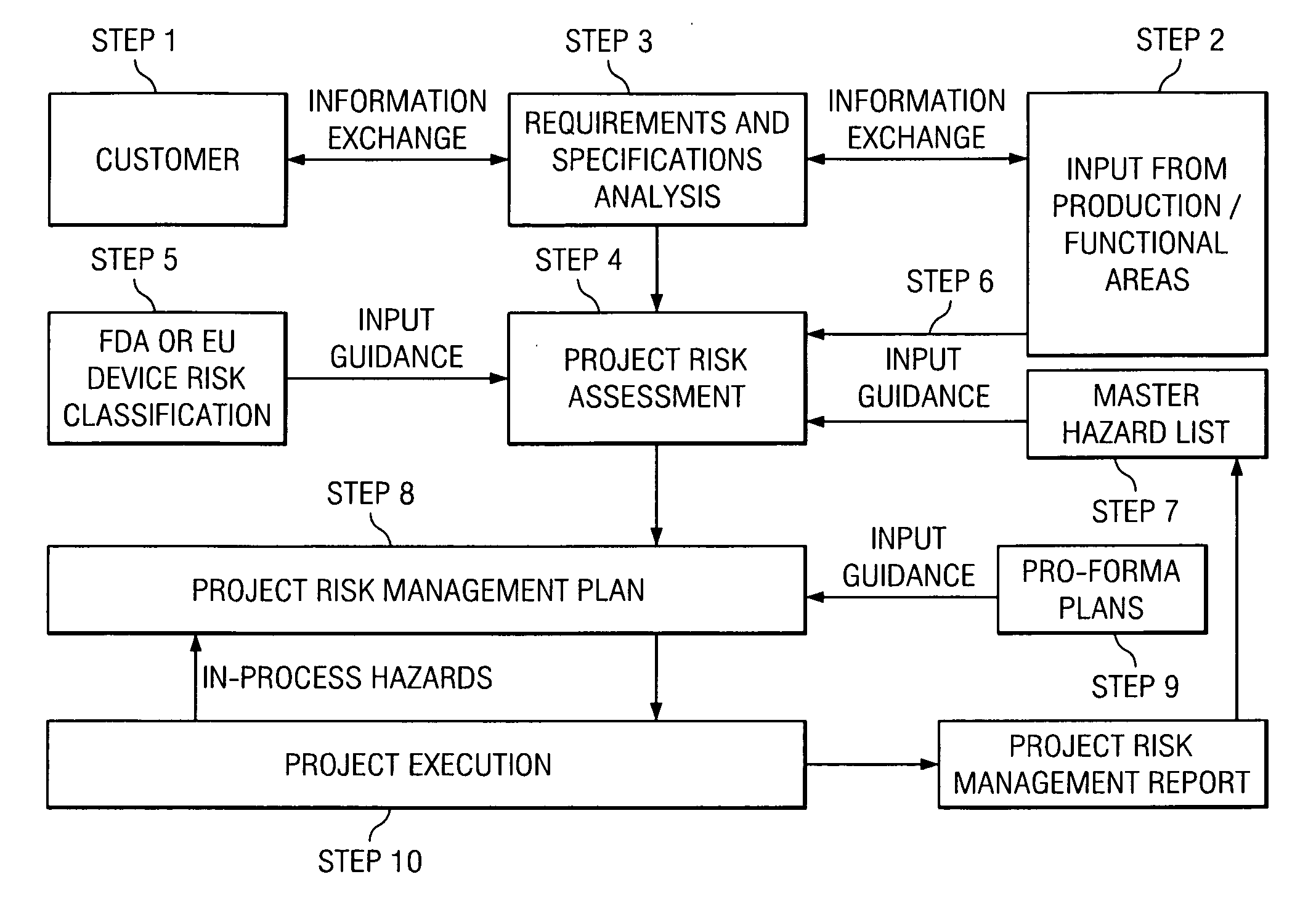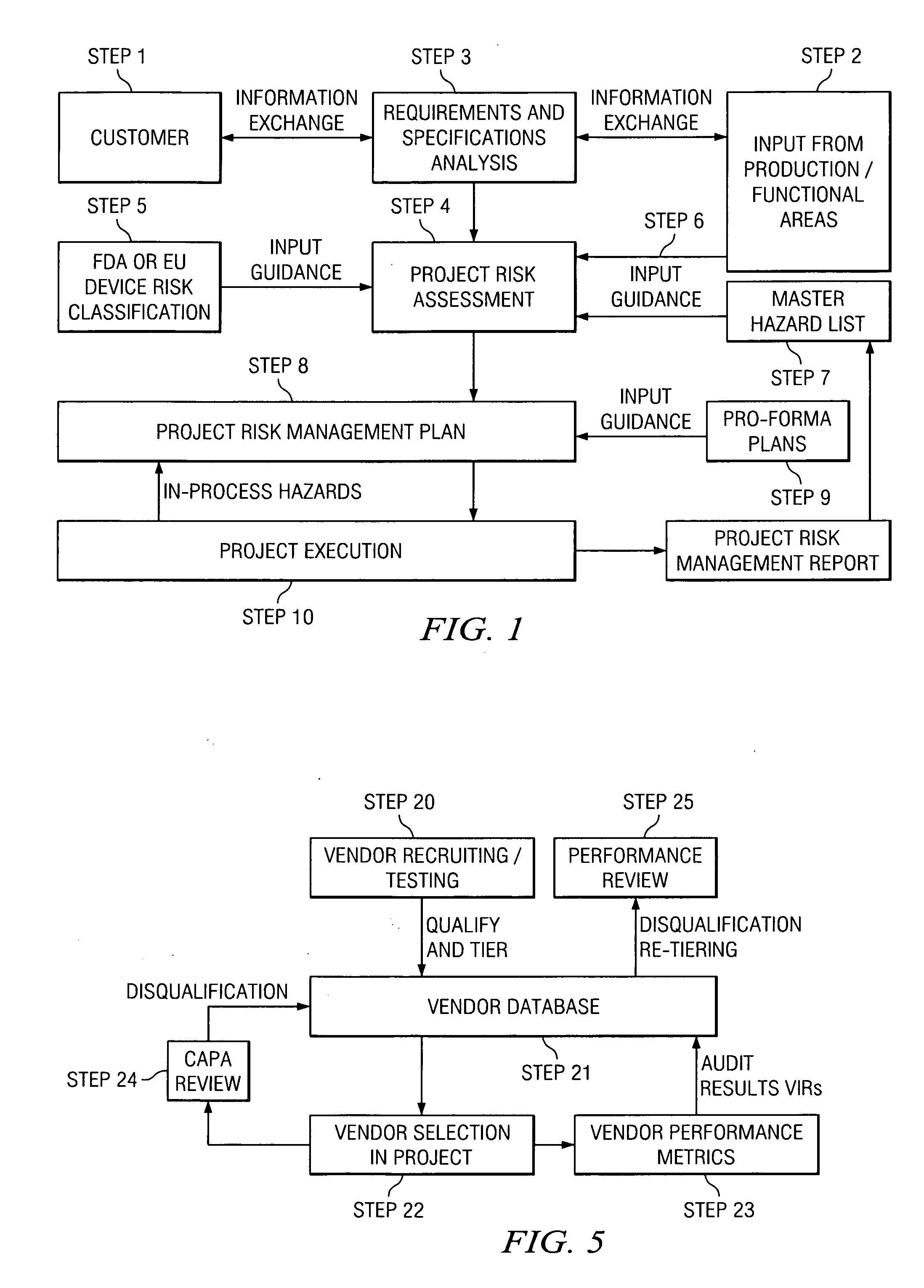Method of managing error risk in language translation
a technology of language translation and risk, applied in the field of language translation error risk management, can solve the problems of iii devices carrying the highest risk of health and human safety, general (class i) and special (class ii) control is insufficient to manage the more substantial safety risk, and hamper sales
- Summary
- Abstract
- Description
- Claims
- Application Information
AI Technical Summary
Benefits of technology
Problems solved by technology
Method used
Image
Examples
Embodiment Construction
[0051]All human activity can be evaluated in terms of risk, which applies to the activity itself as well as to the product of the activity. Commonly, this is referred to as “inherent risk”. In the context of a translation-related activity, the product of the activity can be, for example, a translated document, a software user interface, a Web site, a database, and / or other text- or electronic-based content. Each of these products represents a potential hazard for the user, consumer, patient, and the like (collectively hereinafter “consumer”) as well as for the manufacturer of the product. For the consumer and / or the manufacturer, the resulting risk may be more or less severe. The current analysis assumes that the purpose of the translation activity is, from a related document in a source language, to create a translated product in a target language that is appropriate for the intended use of the translated document.
[0052]By example, in the case of a product registration form, a tran...
PUM
 Login to View More
Login to View More Abstract
Description
Claims
Application Information
 Login to View More
Login to View More - R&D
- Intellectual Property
- Life Sciences
- Materials
- Tech Scout
- Unparalleled Data Quality
- Higher Quality Content
- 60% Fewer Hallucinations
Browse by: Latest US Patents, China's latest patents, Technical Efficacy Thesaurus, Application Domain, Technology Topic, Popular Technical Reports.
© 2025 PatSnap. All rights reserved.Legal|Privacy policy|Modern Slavery Act Transparency Statement|Sitemap|About US| Contact US: help@patsnap.com



